Reviewing Miller, Part 2: “Quiet Misery”
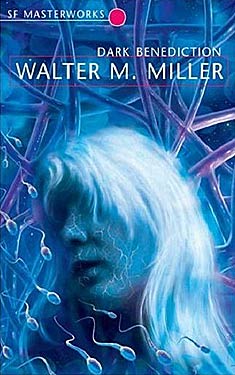 Continuing our series from two weeks ago (apologies for the week-long gap), we will now proceed with the third and fourth short stories in Walter M. Miller’s Dark Benediction series, “Anybody Else Like Me?” and “Crucifixus Etiam,” two very different stories.
Continuing our series from two weeks ago (apologies for the week-long gap), we will now proceed with the third and fourth short stories in Walter M. Miller’s Dark Benediction series, “Anybody Else Like Me?” and “Crucifixus Etiam,” two very different stories.
Anybody Else Like Me?
This story has the feel and narrative structure, oddly enough, of an H. P. Lovecraft short horror story. Thankfully, Miller does not copy the New Englander’s penchant for purpling his prose, and sticks with his workmanlike vocabulary. The protagonist of this short and chilling tale is Lisa Waverly, a wife and mother who is “well-read, well-rounded, well-informed…. Then why this quiet misery?” (30). Miller makes you briefly think that he is going to give you an early-feminist story of self-created female angst and misery like Virginia Woolf’s or Sylvia Plath’s, only to pull out the rug and expose the terrifying reality that is causing Lisa’s mental anguish. She is a mutant and a telepath and feels emptiness in the absence of others like her. Unfortunately, when she finally does meet another of her kind, he turns out to be a frightening scientist who decides they need to be together at any cost. From the early unraveling of Lisa’s mind, to the growing terror of the danger imposing upon her, to the final confrontation between the two mutants, Miller has a firm grasp on the reader’s adrenaline level through the whole ride.
Crucifixus Etiam
Unlike the previous three stories, this one begins far away from the mundane world we know, in the far future of 2134 A.D. and the distant locale of Mars. The protagonist is Manue Nanti, a Peruvian worker who has been sent to Mars as a manual laborer for a mysterious project. Martian residents have the help of implanted oxygen tubes to help them survive in the thin and alien atmosphere. The life-giving oxygen is pumped directly into their blood such that they do not even need to breath, which leads to such a severe weakening of the lungs that those who return to Earth in that condition cannot live without lifelong medical assistance. Manue does not want to become a “troffie,” one of those whose lungs are so atrophied they can barely even speak, but the pain of forcing himself to breath the wispy air slowly takes its toll, as does his ignorance of the work he is doing. Why do the engineers and corporate heads hide their goals from the common workers? “There could be no excuse for secrecy, they felt, in time of peace. There was a certain arbitrariness about it, a hint that the Commission thought of its employees as children, or enemies, or servants” (60). He likewise feels distanced from the practice of his native religion when he attends Mass, which seems out of place “under the dark sky of Mars…. Faith needed familiar surroundings, the props of culture” (56-7). The resolution of both of these realities of alienation comes about by way of a movement hinted at in the story’s title, taken from the Nicene Creed. It is a sad ending, but one appropriate to the themes of the story.
Next week: “I, Dreamer” and “Dumb Waiter.”
Come Aboard, We’re Expecting You
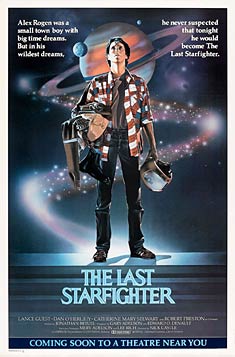 As military recruitment propaganda films go, I find The Last Starfighter to be something of an odd duck.
As military recruitment propaganda films go, I find The Last Starfighter to be something of an odd duck.
The Last Starfighter is ostensibly a mid-1980’s escapist entertainment about a trailer park kid who’s conscripted into some kind of galactic corps, thanks to his prowess at video games. But underneath, the film is something more nefarious – namely, yet another misguided government attempt to ramp up recruitment in lieu of mandating a draft, by making military service seem fun and adventurous.
Directed by Nick Castle, who co-wrote Escape From New York with John Carpenter, The Last Starfighter burst onto the scene in 1984 and if memory serves was largely embraced and cherished by the filmgoing populace.
Having seen the film last night, I’m left with one burning question. Why?
I went in with high hopes. Castle, after all, was the man responsible for much of the New York humor of Escape From New York, including the character of Cabbie. For my money, anyone who can shoehorn Ernest Borgnine into a John Carpenter film deserves an Oscar nod.
Our hero, Lance Guest, the trailer park kid with the hot hand, spends much of the film in a state of reluctance. I don’t really blame him. I spent much of this film in a state of reluctance, too.
Lance doesn’t embrace being the last starfighter because it’s dangerous, and he only agrees to take the helm after much cajoling from the supporting cast. Robert Preston never worked so hard. (It was a long time after The Music Man, but Bob still had the sparkle.) 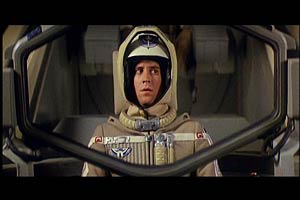
(SIDE NOTE: I spent a good deal of time worrying that I wouldn’t make it all the way through The Last Starfighter, which doesn’t bode well for my scheduled viewing of Battlefield Earth. I need your moral support. Please. The things I do for you people.)
Lance’s reluctance can be ultimately traced back to what I call “The Stubing Effect.” ™
The Stubing Effect refers to the fact that the Rylans (the good aliens Lance is conscripted to fight for) all look like Captain Stubing from The Love Boat.
Even the females.
When even the women in your film look like Captain Stubing from The Love Boat, you know you’re in trouble. Big trouble.
It’s the over indulgent use of Gavin MacLeod clones that I think is the downfall of this film. That, and the fact that the film is heavily laden with CGI. Now consider we’re talking 1984 CGI here. My Atari 2600 was pumping out better pixels than The Last Starfighter.
I could almost forgive the cheesy CGI. But the overuse of Stubing is too much.
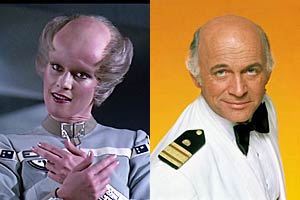 Now, I love Gavin MacLeod as much as the next person. I’m a big fan of The Gav. Big fan. But somehow His Stubingness just doesn’t translate well into science fiction.
Now, I love Gavin MacLeod as much as the next person. I’m a big fan of The Gav. Big fan. But somehow His Stubingness just doesn’t translate well into science fiction.
So I ask the United States Air Force (who undoubtedly was behind the making of this film), “As a recruitment film, do you really think female Stubings are the way to psychologically press gang young men into military service?”
Female aliens with male pattern baldness just don’t really impress me as a way to entice America’s youth to be all they can be.
Admittedly, I don’t remember much more from the film than that, reeling as I was from Stubingness. There was something called a Zando-Zan that looked like a crawfish taking potshots at Lance and his robot twin in a trailer park. And they finished the film with the dreaded Death Blossom starship attack. Beyond that, it’s a blur.
For my money, the better military recruitment film from 1984 was Red Dawn, featuring well-choreographed Patrick Swayze musical numbers. “Nobody puts Baby in a corner!” Now isn’t that exactly the go-get ’em attitude you want from your armed forces?
DON’T FORGET – BATTLEFIELD EARTH CHARITY CHALLENGE!
Worlds Without End created a tribute fund through St. Jude Children’s Research Hospital –
Help us reach our charity goal. Make a donation, be my charity sponsor, and I promise I will sit through an entire viewing of Battlefield Earth, no matter how painful it gets.The Best Science Fiction and Fantasy Novels: A List of Lists
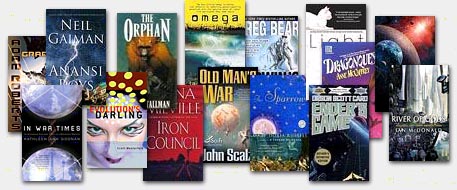
In our quest to bring you the best books in Science Fiction and Fantasy we’re expanding our database beyond the confines of the 10 awards we cover. But where else do you go to find great books besides the awards? Well, it turns out that SF/F geeks like to make lists of the great books they read and there are many great lists already out there.
We’ve got seven lists so far including two new ones we just added that you should check out:
We’ll continue to bring you new lists from time to time so you’ll never run out of books to read. If you’re already a member you can follow along with BookTrackr™ and see how you match up. If you’re not, you can join now by signing up in our forum. You know you want to.



















 Full Details
Full Details

